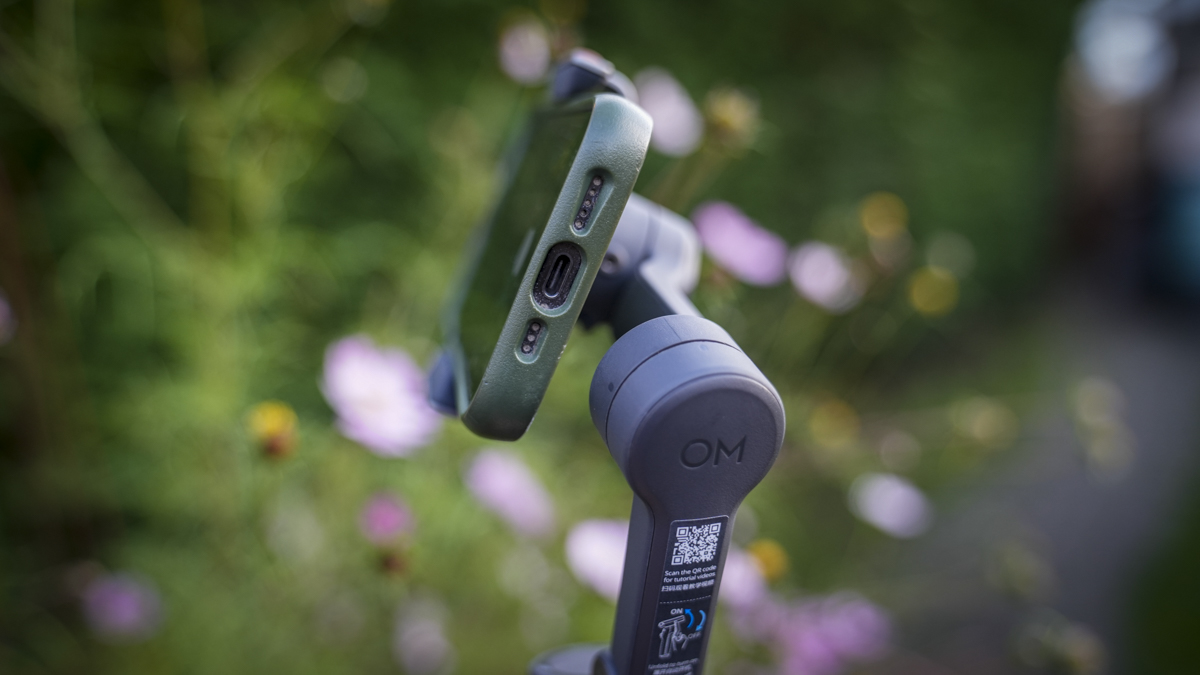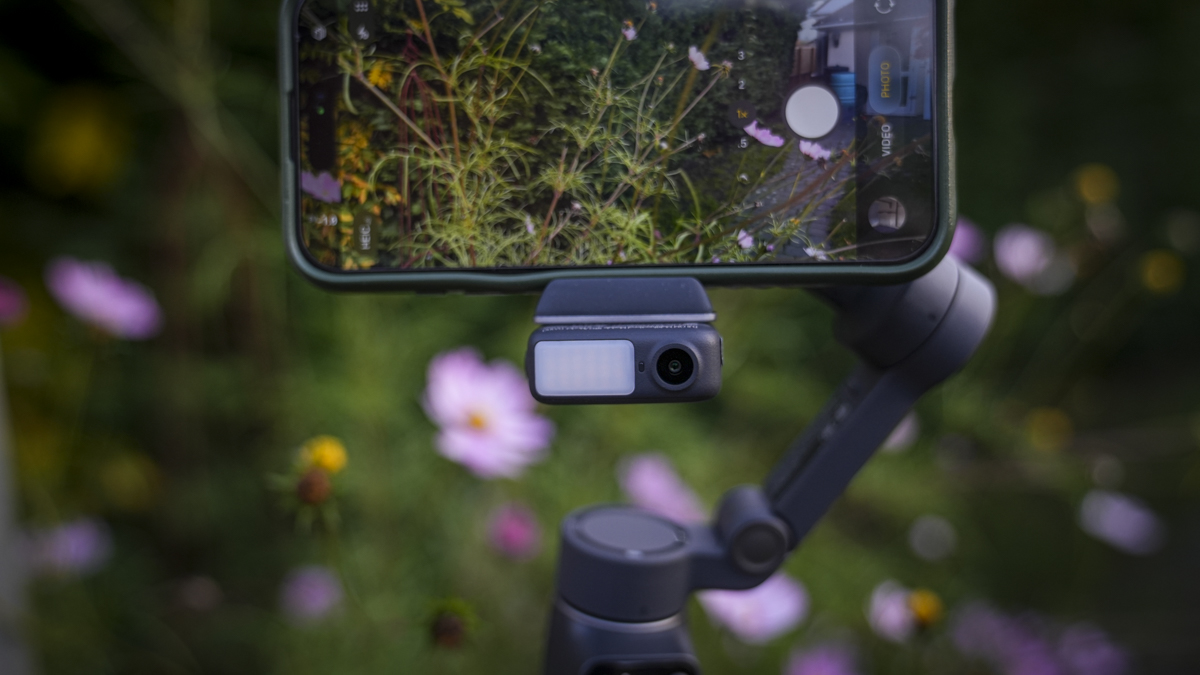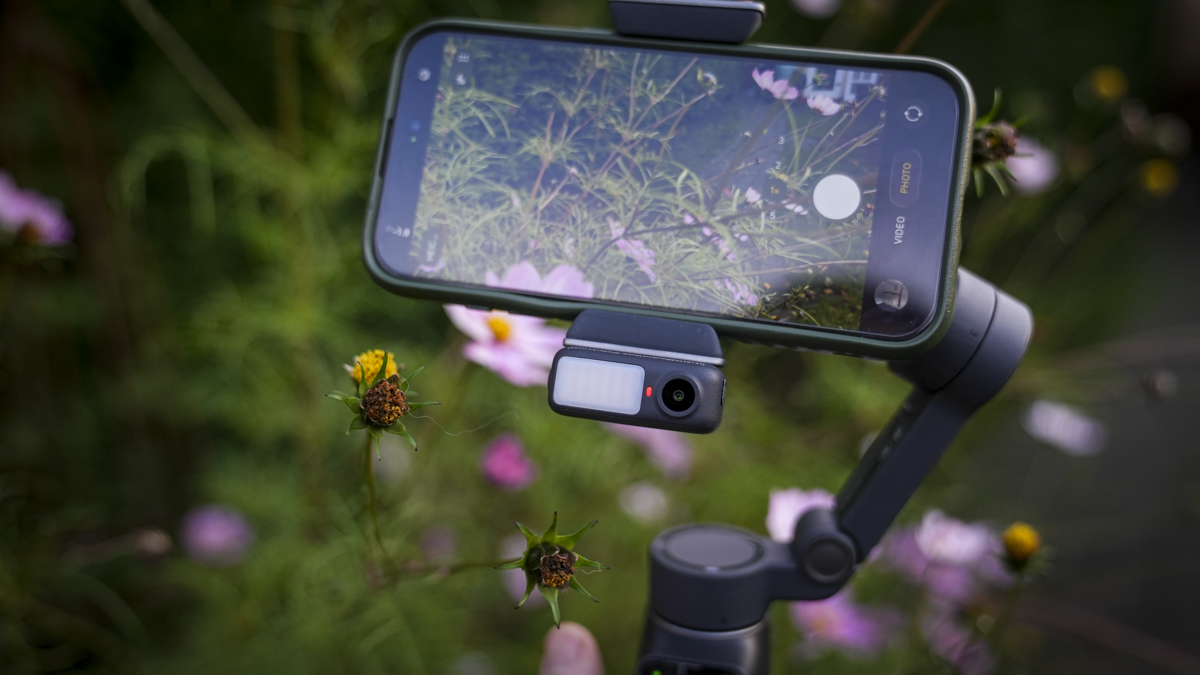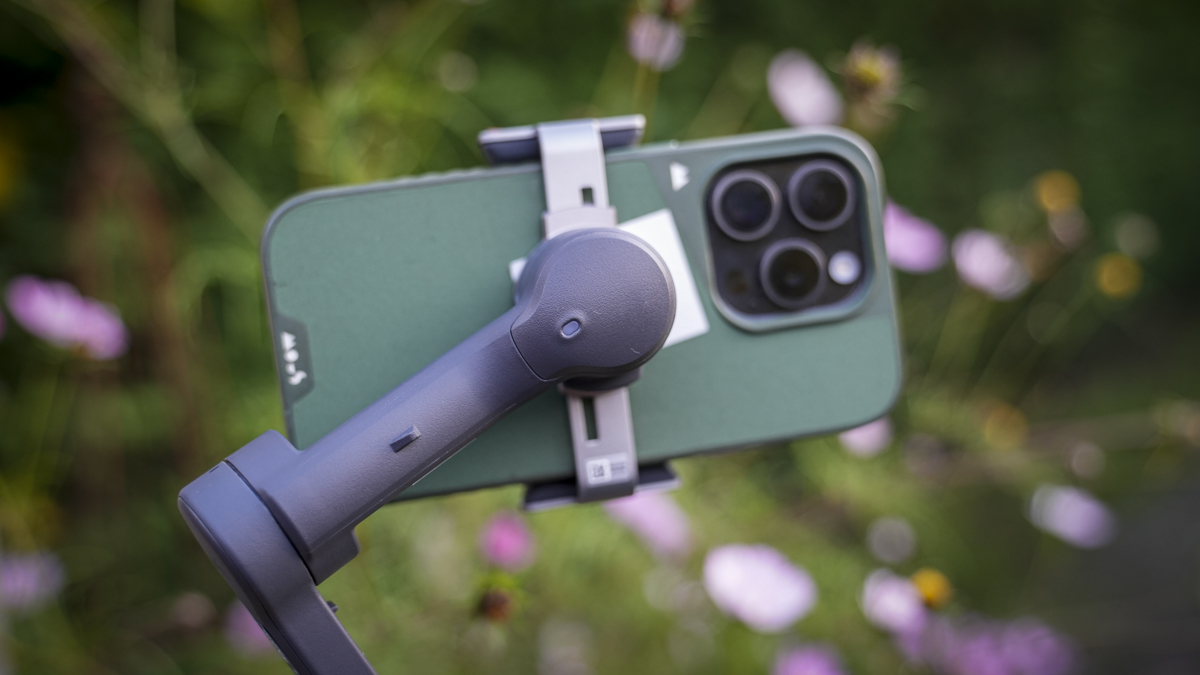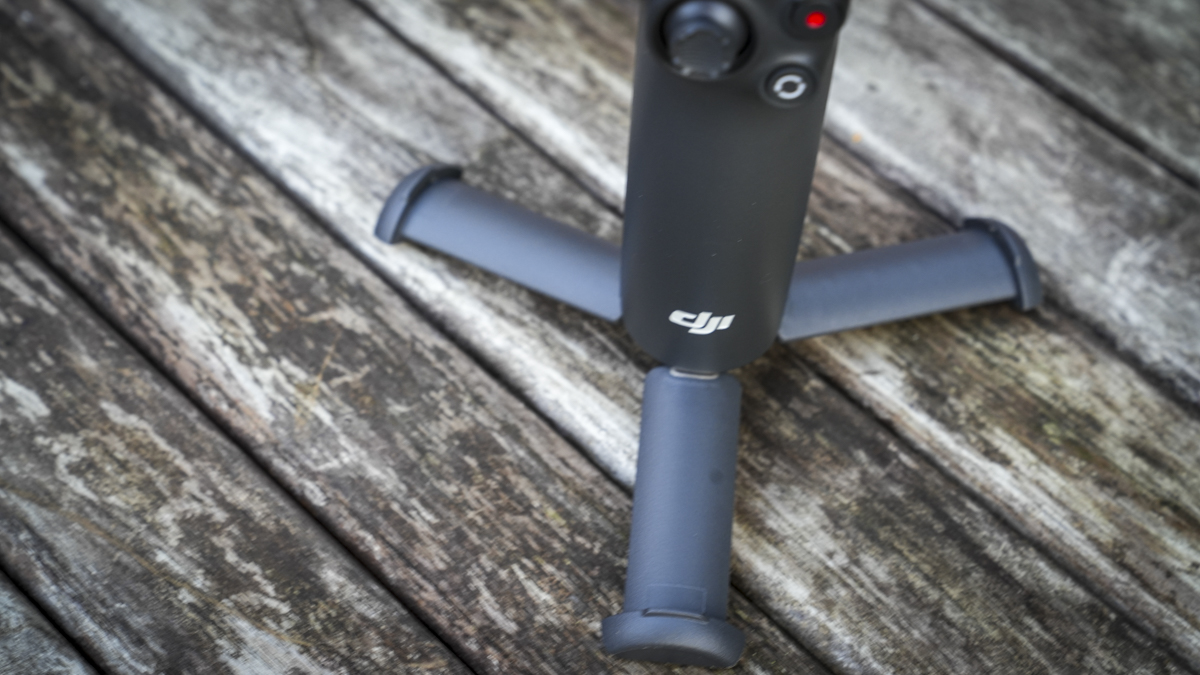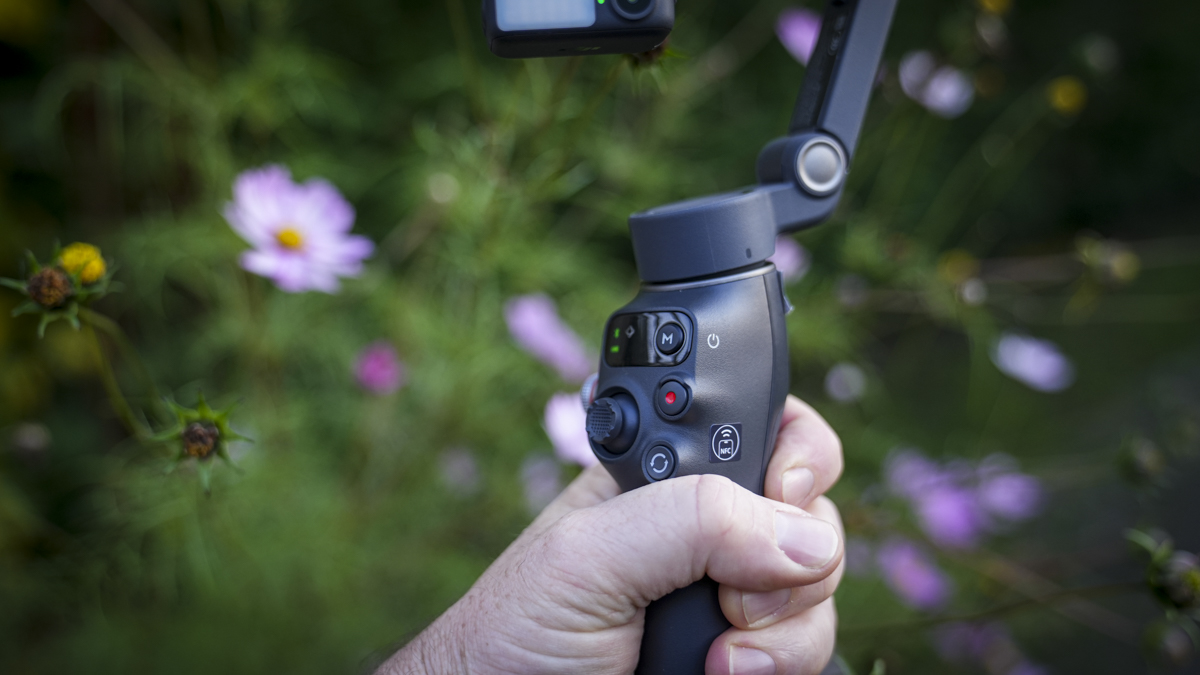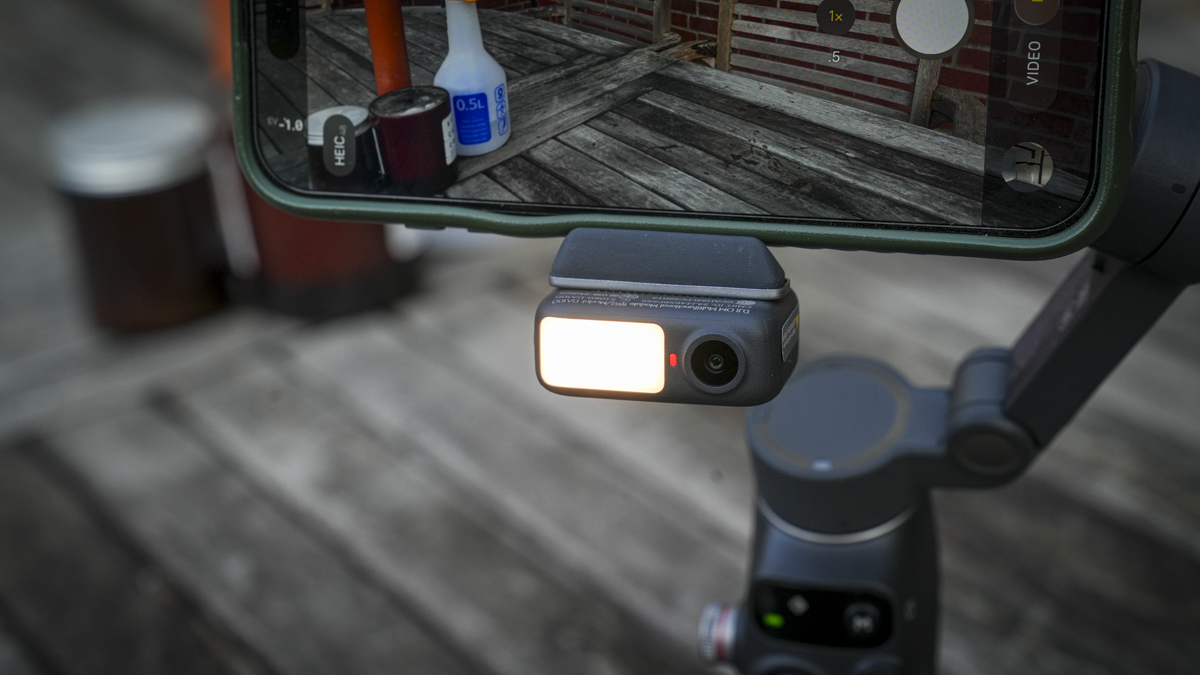The DJI Osmo Mobile 8 is a smartphone gimbal that offers a full 360° horizontal pan rotation and is now entering the seventh generation of three-axis mechanical stabilisation. This enables a cinematic effect from your mobile phone footage.
The gimbal has been designed to work with the best iPhone and Android smartphones and even adds Apple DockKit tracking for the iPhone, and ActiveTrack 7.0.1 via the DJI Mimo app. What’s more, with the small light module having a built-in AI camera, you can also utilise hand gestures to start and stop tracking.
There are plenty of new features that have been built in, and through the Mimo, you can opt to track various types of subjects, including pets, people, cats, dogs, and really any object. This frame, during the action, can be selected from within the Mimo on both Android and Apple phones.

Mechanically, as well as three-axis stabilisation, the gimbal is well designed. With a detachable mechanical phone clasp, there’s plenty of flexibility over the phone size that it can hold. On the back of the holder, there are four contact points that enable data communication between the light and AI camera module, which simply magnetise into place. The main body of the gimbal, as we’ve seen from previous iterations, is designed to pack down nice and tight so that it can easily slip into a side pocket without taking up too much weight or bulk. The design simply unfolds and has an automatic switch-on feature so that once it’s all assembled, you can very quickly start shooting.
The handle grip is nice and simple, and if you just want simplicity, then the joystick enables you to rotate and adjust the tilt of the camera, whilst the orientation button enables you to quickly flip from portrait to landscape. The mode button adjusts the type of tracking that you can enable. What’s great about this new iteration of the Osmo Mobile is that with the AI camera module attached, you can quite literally start and stop tracking just with simple hand gestures in front of the camera, giving you a complete hands-free setup without the need to enter the Mimo app or even have it installed on your phone.
This means that if you’re out and about with other people, then they too can utilise the full power of this mobile gimbal without any requirement for additional software or setup.
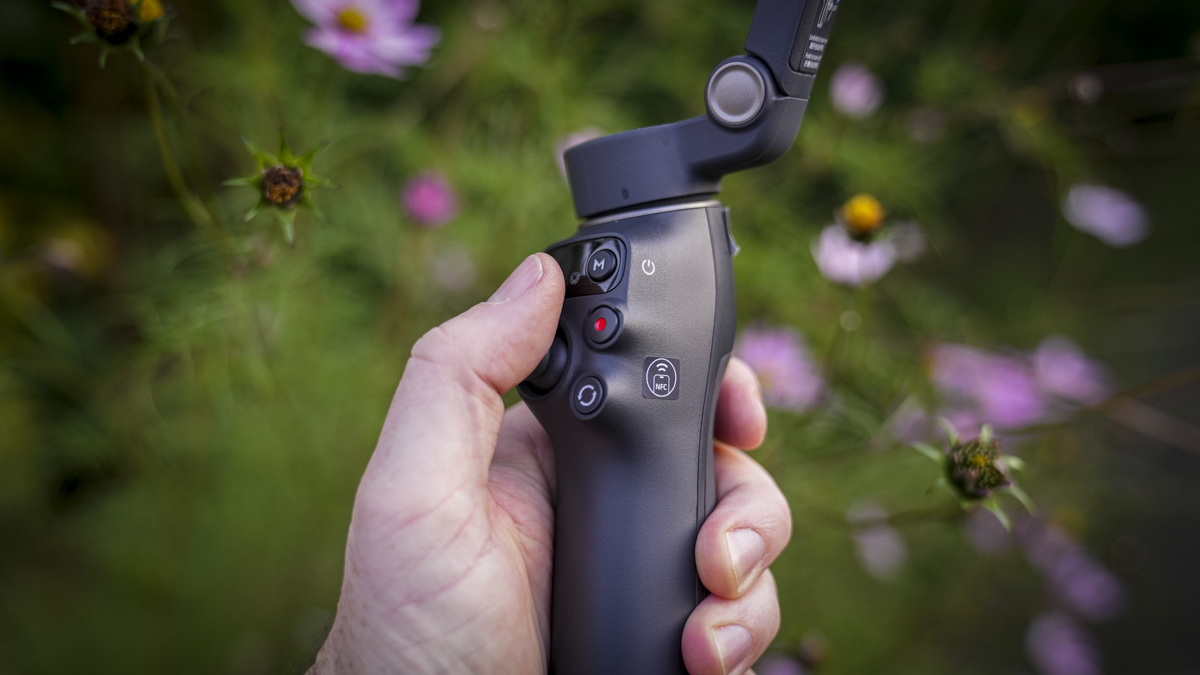
However, if you do connect with the Mimo app, you unlock the full potential, including the ability to adjust settings and use all the templates and other functions and features that are accessible.
As this is now the eighth iteration of this highly popular mobile gimbal, it really has started to become very refined with a comfortable handle, easy-to-use setup and the more advanced features such as being able to connect the DJI Mic 3, 2 or Mini in a fully integrated and seamless way.

